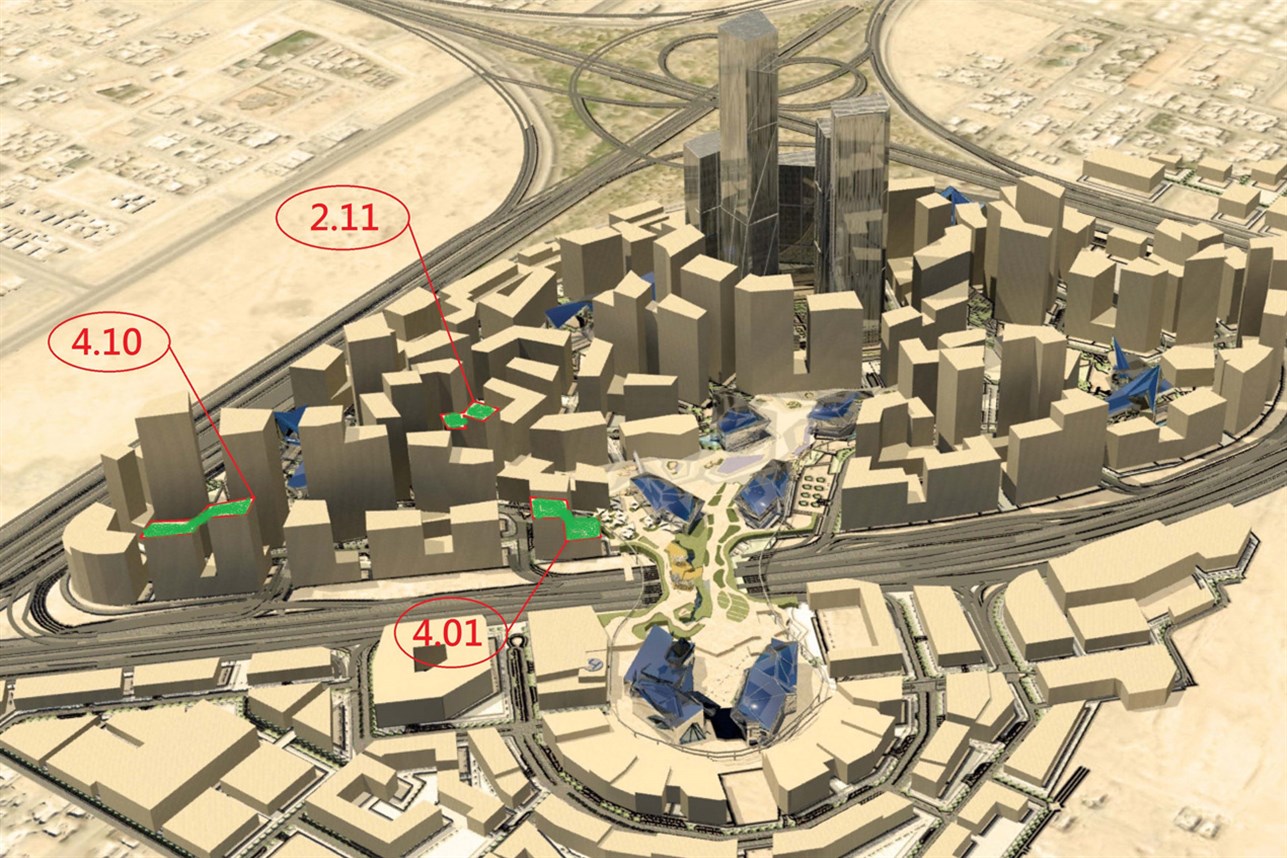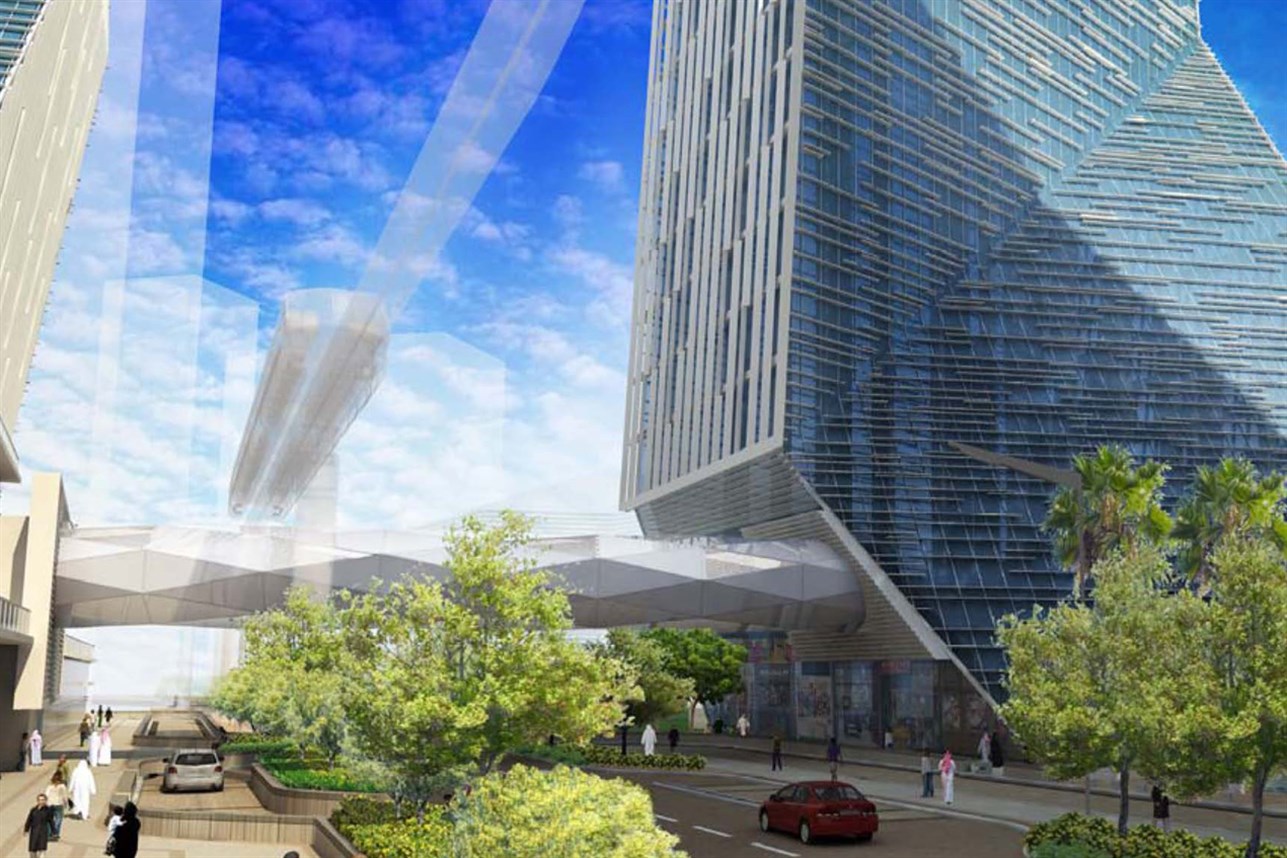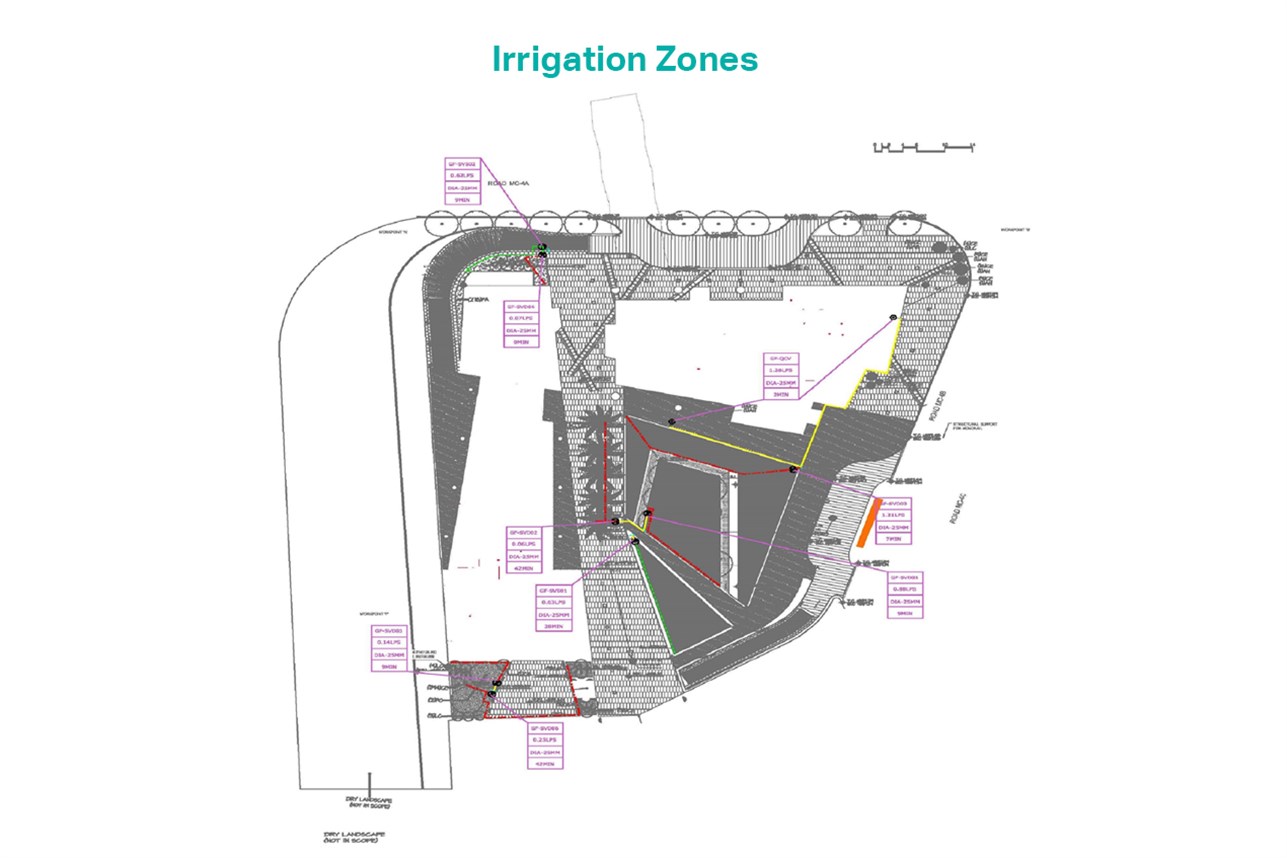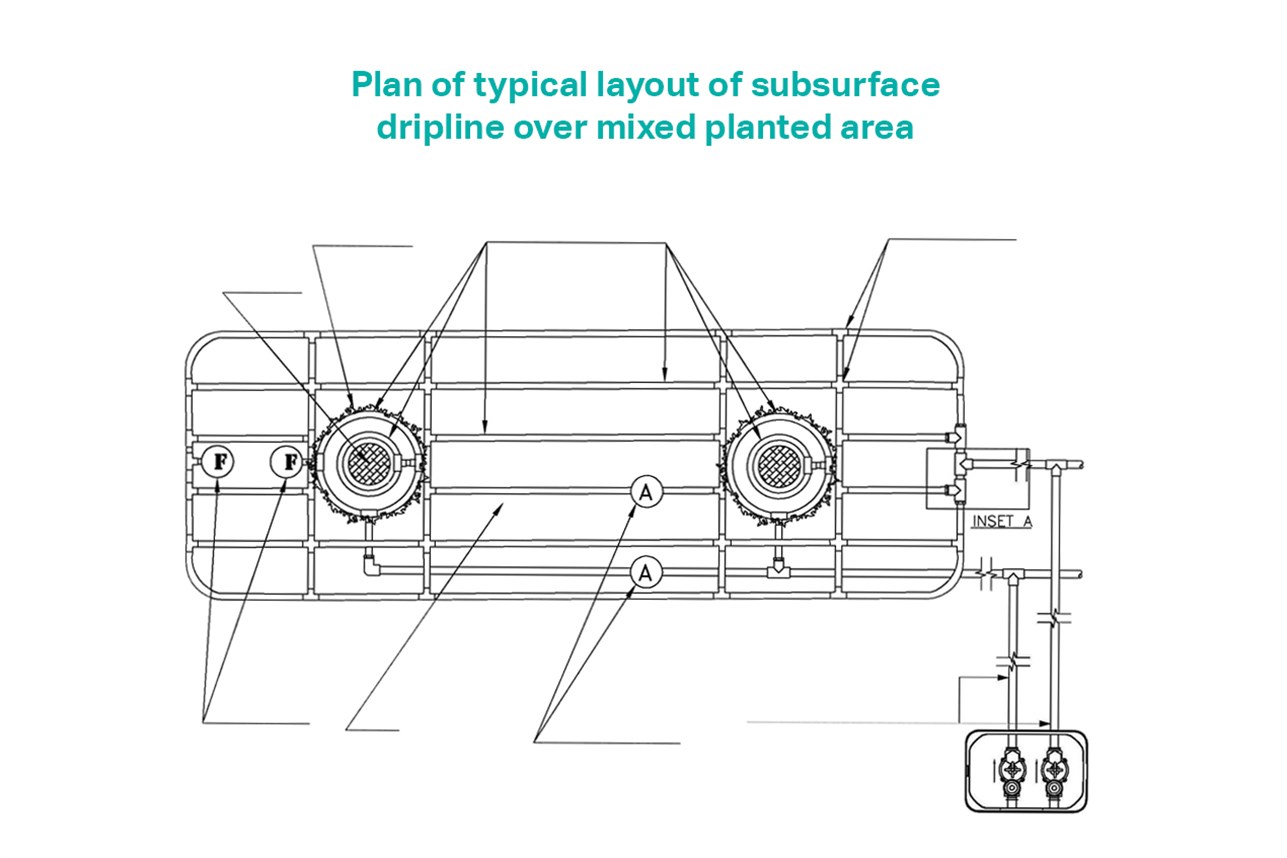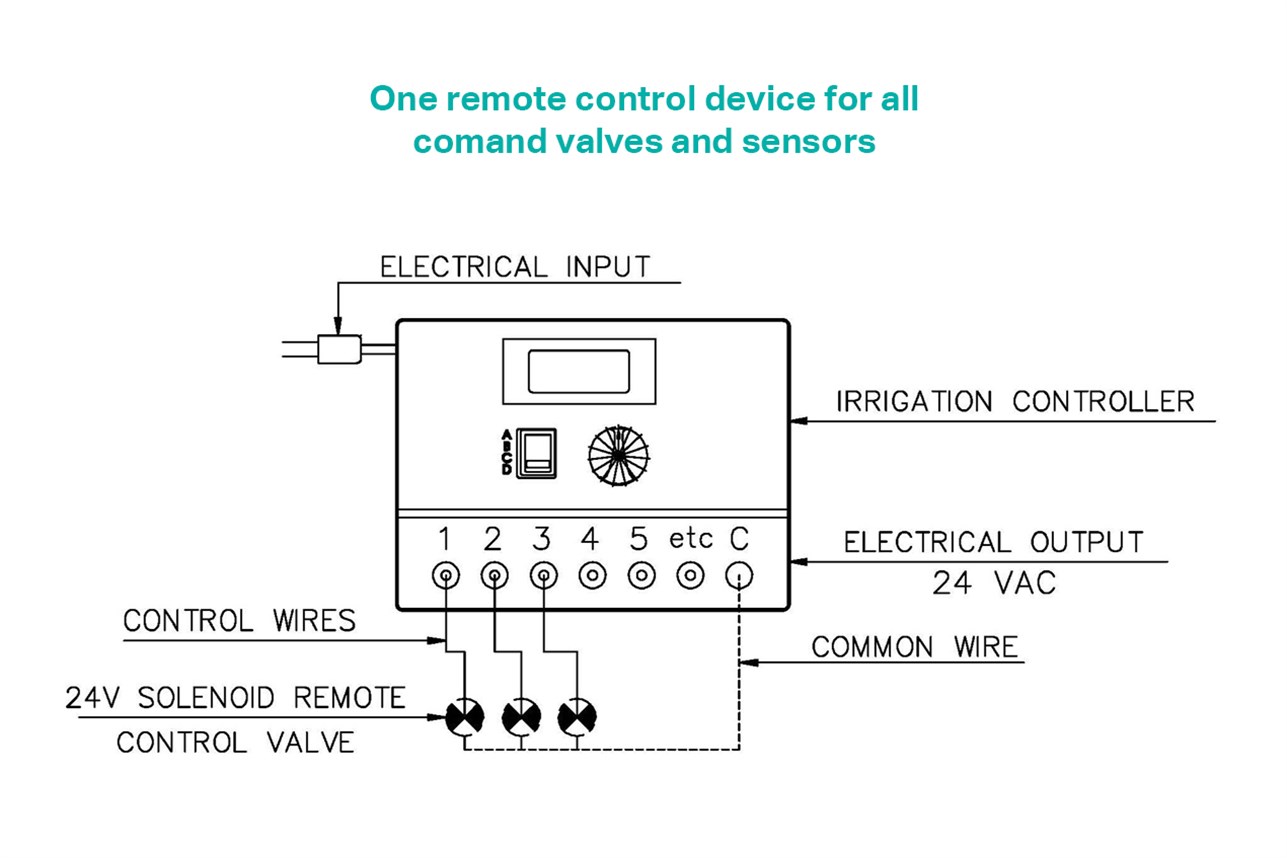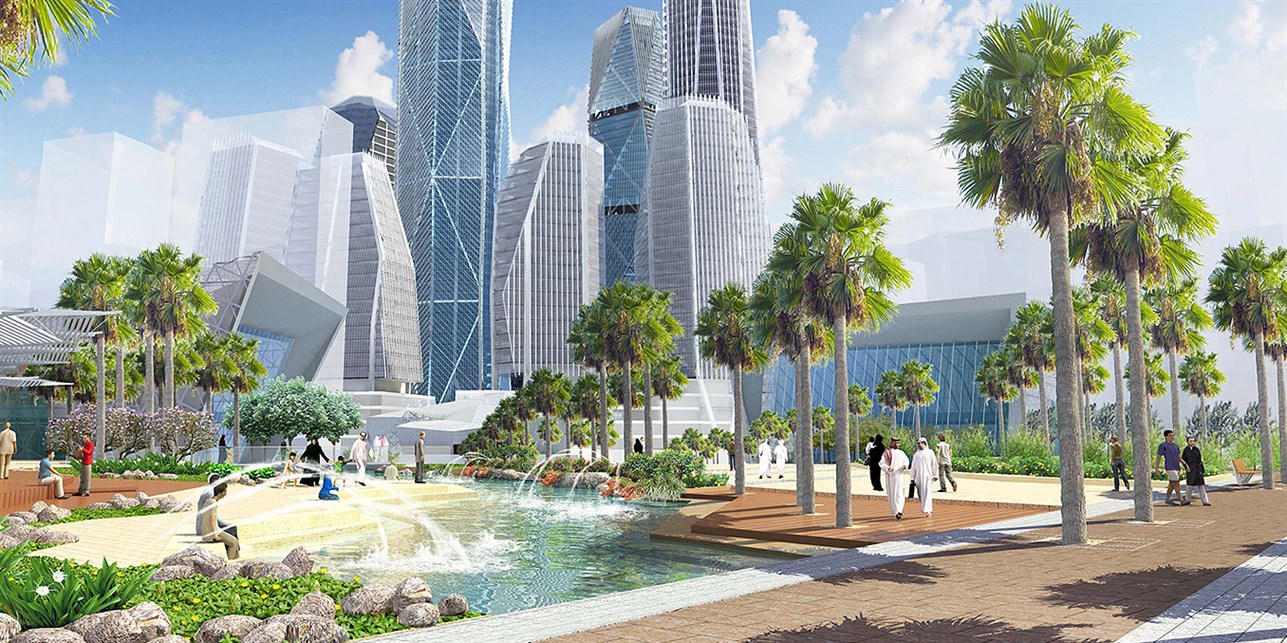
Date20.02.16
AuthorElie Abourejaili
CompanyDar Al‑Handasah
LocationKingdom of Saudi Arabia Middle East
From drought-resistant plants and grey-water capture to drip irrigation and water calculation measures, the smart decisions of the team working on the King Abdullah Financial Districts led to a LEED-certified, water-conserving irrigation system.
As the demand for domestic water swells in urban centers, other water sectors are feeling the pinch. A case in point is landscape irrigation which, in regions with low water supply and deteriorating water quality, takes the back seat to more pressing needs. Naturally, efficient design becomes all the more imperative.
In their landscaping of three parcels for the King Abdullah Financial District (KAFD) in Saudi Arabia, Dar’s engineers adopted the USGBC‑LEED code: “Water Efficient Landscaping” (Credit WEc1) to benchmark their irrigation design, as per the project requirement. The team’s hard work on the three parcels paid off when the final design was awarded the maximum of all four points.
Following the LEED
Good irrigation design starts with setting and following waterconservative criteria. Dar’s team adopted the Leadership in Energy and Environment Design (LEED) Green Building System, an industry‑recognized set of guidelines that helps irrigation designers approach their design cases more conservatively, and make genuinely sustainable decisions.
The U.S. Green Building Council (USGBC) awards the LEED, or Leadership in Energy & Environmental Design, certifications that recognize best‑in‑class green building strategies and practices. The world‑recognized certification program allows designers and engineers to approach their cases more conservatively and make genuinely sustainable decisions.
Choosing native and drought-tolerant plants
The Dar team picked native, drought‑tolerant plant species suited to Riyadh’s scorching desert environment. The flora, a mix of native and ornamental palms, trees, shrubs, and ground cover, enjoys low to medium water consumption and low maintenance requirements.
Sourcing from grey-water
The design achieves big water savings by turning to grey‑water. Grey‑water is domestically‑produced wastewater that contains no sewage. Factoring water consumption rates into the design, the Dar team designed a site that was able to capture grey‑water on‑site and reuse it very efficiently as irrigation water.
Agriculture vs. landscaping
Agriculture and landscaping are two very different fields. In agriculture, one plant species is planted in the same density pattern, row after row, and grown in an extensive and uniform microclimate. In landscaping, many plant species are planted in tandem, often in highly varying densities, and grown in significantly changing microclimates created by the varying landscape features.
The Landscape Coefficient (KL) method: a formula for reducing irrigation water requirements
Rather than crudely applying a maximal water requirement rate that over‑estimated the parcels’ real watering needs, Dar’s team turned to something called the Landscape Coefficient method, or KL factor. The KL factor predicts, during the design stage, the volume of water required for a given landscape area. KL calculations help cut down on unnecessary water applications.
ETL = KL x ETo
Landscape Evapotranspiration = Landscape Coefficient x Reference Evapotranspiration
Where:
KL = ks x kd x kmc
Landscape Coefficient = species factor x density factor x microclimate factor
By applying the KL method in estimating the landscape plantings water requirements of the KAFD three parcels, Dar’s team ensured that enough water ‑ and no more ‑ would go towards maintaining the plants’ health, appearance and growth.

Water-saving technologies
In parallel with water-conserving design, the team effected a number of efficient irrigation technologies and design practices.
They designed the irrigation system to be fully automatic, and equipped it with a controller that connected command valves, flow and soil moisture sensors. The controller and remote control devices allow the punctual supply of irrigation water to the landscaped areas.
The team divided the landscaped area into irrigation zones, based on plant types, water-usage category, and wind and sun exposure. These zones were controlled by separate valves delivering the necessary water amount. The valves, all remote-controlled, can control one irrigation zone at a time. What is more, they feature pressure-regulating devices that can lead to water savings of up to 50%.
High-efficiency subsurface drip irrigation systems
The team recommended high-efficiency subsurface drip irrigation systems that supply water slowly and directly to the plant root bulb. Savings from such subsurface drip-line systems can reach up to 40% over conventional water systems. The special drip systems have exceptional advantages:
- Reduce the evaporation of applied water
- Cause less water run-off
- Avoid overspray.
All the drip emitters used were of the pressure-compensating type, a self-pressure compensating feature that minimizes the water’s outflow fluctuations, resulting in a high-uniform water distribution.
Encouraging results
Adopting these designs and technologies helped Dar’s client save substantial amounts of water over conventional systems. The final LEED calculation forms proved that the design reduced total water use by an average of 59% across the three parcels.
The reduction in total water applications together with the no-potable water use strategy helped the team earn the maximum four points of the LEED Water Efficient Landscaping WE Credit 1 for all three parcels. The experience cemented our engineers’ skills in a field that is fast becoming essential in today’s thirsty cities.

